Grow Bitter Melon in Tub and unlock a world of homegrown goodness, even without a sprawling garden! Have you ever dreamt of harvesting your own vibrant, slightly bitter, yet incredibly healthy Bitter Melon right from your patio? Well, dream no more! This DIY guide is your passport to cultivating this unique vegetable in the comfort of a container.
Bitter Melon, also known as Karela, has a rich history deeply intertwined with traditional medicine and culinary practices across Asia and Africa for centuries. It’s not just a vegetable; it’s a cultural icon, celebrated for its health benefits and distinctive flavor. But let’s be honest, growing it can seem intimidating, especially if you’re limited on space.
That’s where this DIY trick comes in! Many people struggle with the misconception that you need a large garden to enjoy fresh, homegrown produce. I’m here to tell you that’s simply not true! Growing Bitter Melon in a tub is not only possible, but it’s also surprisingly easy with the right guidance. This article will break down the process into simple, manageable steps, ensuring you can successfully grow Bitter Melon in Tub, regardless of your gardening experience. Imagine the satisfaction of harvesting your own organic Bitter Melon, knowing exactly where it came from and how it was grown. Let’s get started and transform your balcony or patio into a thriving Bitter Melon haven!
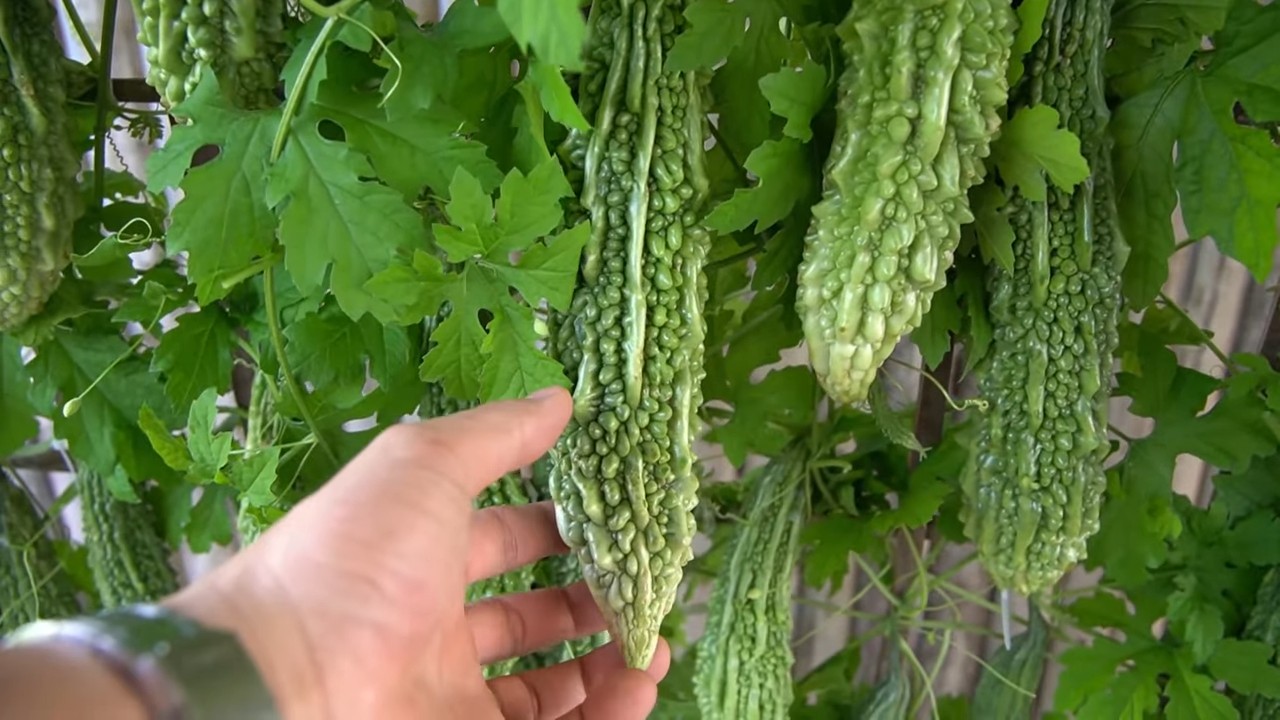
Grow Your Own Bitter Melon in a Tub: A Comprehensive Guide
Hey there, fellow gardening enthusiasts! I’m so excited to share my experience growing bitter melon (also known as bitter gourd or karela) in a tub. It’s a rewarding experience, and you don’t need a huge garden to enjoy fresh, homegrown bitter melon. This guide will walk you through every step, from choosing the right tub to harvesting your bounty. Let’s get started!
Choosing the Right Tub and Location
Before we even think about seeds, let’s talk about the foundation of our project: the tub and its location.
* Tub Size: Bitter melon vines are vigorous growers, so you’ll need a fairly large container. I recommend a tub that’s at least 24 inches in diameter and 18 inches deep. This gives the roots plenty of room to spread out and support the plant.
* Material: Plastic, terracotta, or even a repurposed container will work. Just make sure it has good drainage holes.
* Drainage: This is crucial! Bitter melon hates soggy roots. If your tub doesn’t have enough drainage holes, drill a few more.
* Location: Bitter melon thrives in warm, sunny locations. Aim for at least 6-8 hours of direct sunlight per day. A south-facing balcony or patio is ideal. Also, consider wind protection. Strong winds can damage the delicate vines.
Preparing the Soil
Now that we’ve got our tub and location sorted, let’s focus on the soil.
* Soil Mix: Don’t just use garden soil! It’s often too heavy and doesn’t drain well. A good potting mix is essential. I like to use a mix of:
* 50% high-quality potting soil
* 25% compost (for nutrients and drainage)
* 25% perlite or vermiculite (for aeration and drainage)
* pH Level: Bitter melon prefers a slightly acidic to neutral soil pH (around 6.0 to 7.0). You can test your soil pH with a simple soil testing kit.
* Filling the Tub: Fill the tub with your prepared soil mix, leaving about 2-3 inches of space at the top. This will make watering easier.
Starting Your Bitter Melon Seeds
You have two options here: direct sowing or starting seeds indoors. I prefer starting seeds indoors because it gives them a head start and protects them from pests and diseases.
* Soaking the Seeds: Before planting, soak the seeds in warm water for 24 hours. This helps to soften the seed coat and improve germination.
* Starting Indoors (My Preferred Method):
1. Fill small seedling trays or pots with seed-starting mix.
2. Plant 2-3 seeds per pot, about 1/2 inch deep.
3. Water gently and keep the soil consistently moist but not soggy.
4. Place the trays in a warm location (around 75-85°F). A heat mat can be helpful.
5. Seeds should germinate in about 7-14 days.
6. Once the seedlings have a few true leaves, thin them out, leaving the strongest seedling in each pot.
* Direct Sowing (If You Prefer):
1. Wait until the soil has warmed up to at least 70°F.
2. Plant seeds directly into the tub, about 1/2 inch deep, spacing them about 12 inches apart.
3. Water gently and keep the soil consistently moist.
4. Germination may take a bit longer with direct sowing.
Transplanting Seedlings (If Starting Indoors)
Once your seedlings are strong enough (about 4-6 inches tall), it’s time to transplant them into the tub.
1. Harden Off: Before transplanting, you need to “harden off” the seedlings. This means gradually exposing them to outdoor conditions over a period of 7-10 days. Start by placing them in a sheltered location for a few hours each day, gradually increasing the amount of time they spend outdoors.
2. Transplanting:
* Choose a cloudy day or transplant in the late afternoon to avoid shocking the seedlings.
* Gently remove the seedlings from their pots, being careful not to damage the roots.
* Dig a hole in the soil in the tub, large enough to accommodate the root ball.
* Place the seedling in the hole and gently backfill with soil.
* Water thoroughly.
* Space the seedlings about 12 inches apart.
Providing Support: Trellising is Key!
Bitter melon vines need support to climb. A sturdy trellis is essential for maximizing your yield and keeping the fruits off the ground.
* Types of Trellises:
* Bamboo Trellis: A simple and inexpensive option.
* Wire Trellis: Durable and long-lasting.
* A-Frame Trellis: Provides excellent support and allows for good air circulation.
* Netting: Can be stretched between posts or attached to a fence.
* Installing the Trellis: Install the trellis before the vines start to grow. This will make it easier to train them. Make sure the trellis is securely anchored to the tub or the ground.
* Training the Vines: As the vines grow, gently guide them onto the trellis. You may need to tie them loosely with twine or plant ties.
Watering and Fertilizing
Proper watering and fertilization are crucial for healthy growth and abundant fruit production.
* Watering: Water deeply and regularly, especially during hot, dry weather. The soil should be consistently moist but not soggy. Check the soil moisture by sticking your finger into the soil. If the top inch feels dry, it’s time to water.
* Fertilizing: Bitter melon is a heavy feeder. Fertilize every 2-3 weeks with a balanced liquid fertilizer (e.g., 10-10-10). You can also use compost tea or fish emulsion. Avoid over-fertilizing, as this can lead to excessive foliage growth and reduced fruit production.
* Mulching: Apply a layer of mulch around the base of the plants to help retain moisture, suppress weeds, and regulate soil temperature. Straw, wood chips, or shredded leaves are good options.
Pest and Disease Control
Keep an eye out for common pests and diseases. Early detection and treatment are key to preventing serious problems.
* Common Pests:
* Aphids: Small, sap-sucking insects that can weaken plants. Spray with insecticidal soap or neem oil.
* Spider Mites: Tiny pests that create webs on the leaves. Spray with insecticidal soap or neem oil.
* Cucumber Beetles: Can damage leaves and spread diseases. Handpick them or use row covers.
* Fruit Flies: Can damage the fruits. Use fruit fly traps or cover the fruits with netting.
* Common Diseases:
* Powdery Mildew: A fungal disease that causes a white, powdery coating on the leaves. Improve air circulation and spray with a fungicide.
* Downy Mildew: Another fungal disease that causes yellow spots on the leaves. Improve air circulation and spray with a fungicide.
* Fusarium Wilt: A soilborne fungal disease that causes wilting and death of the plant. Use disease-resistant varieties and avoid overwatering.
* Prevention:
* Choose disease-resistant varieties.
* Provide good air circulation.
* Water at the base of the plants, avoiding wetting the foliage.
* Remove any diseased leaves or fruits.
* Rotate your crops each year.
Pollination
Bitter melon has separate male and female flowers. Pollination is necessary for fruit production.
* Natural Pollination: Bees and other insects can pollinate the flowers.
* Hand Pollination: If you’re not seeing enough fruit set, you can hand-pollinate the flowers.
1. Identify the male and female flowers. Male flowers have a long, thin stem, while female flowers have a small, immature fruit behind the flower.
2. Use a small paintbrush or cotton swab to collect pollen from the male flower.
3. Gently transfer the pollen to the stigma of the female flower.
4. Repeat this process for all the female flowers.
5. Hand-pollinate in the morning, when the flowers are open.
Harvesting Your Bitter Melon
The moment you’ve been waiting for! Harvesting your homegrown bitter melon.
* Timing: Bitter melon is typically ready to harvest about 2-3 months after planting. The fruits should be firm and green, with a slightly waxy coating.
* Size: Harvest the fruits
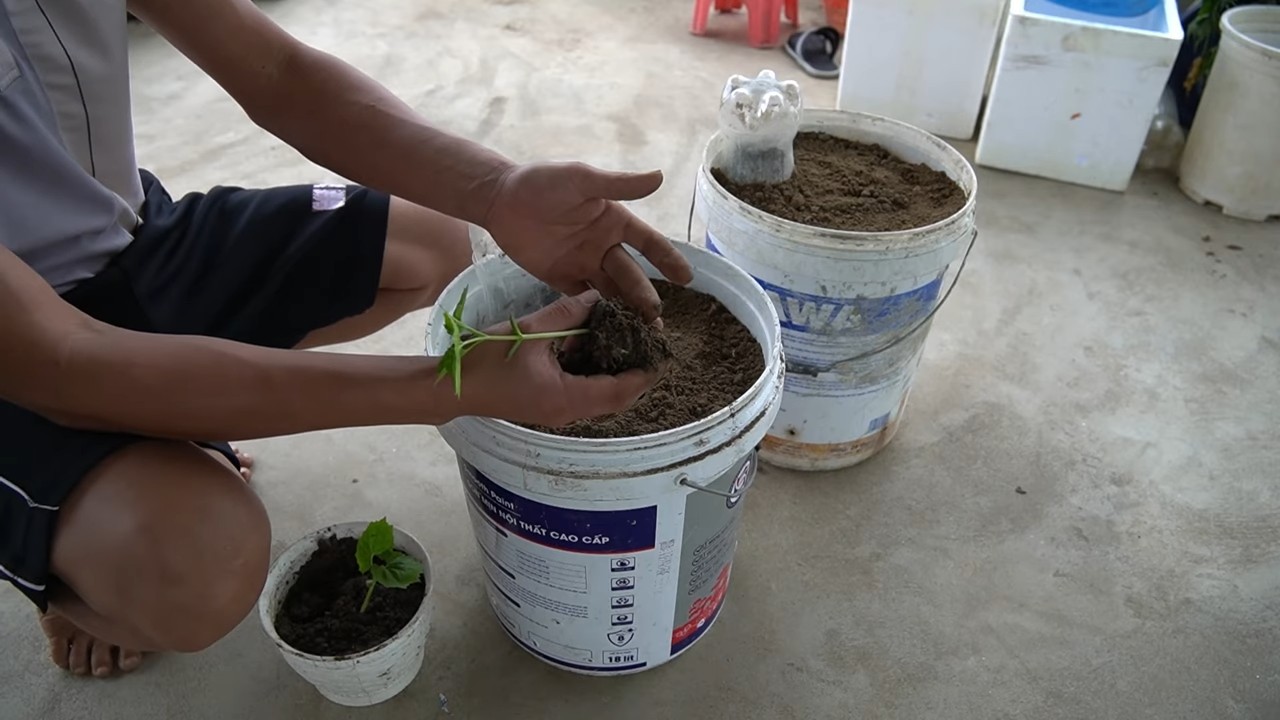
Conclusion
So, there you have it! Growing bitter melon in a tub isn’t just a gardening experiment; it’s a gateway to fresh, homegrown produce, even if you’re limited on space. We’ve walked through the steps, from selecting the right tub and soil to providing the necessary support and care. The beauty of this method lies in its accessibility and adaptability. You don’t need acres of land to enjoy the unique, slightly bitter flavor of this nutritious vegetable.
This DIY trick is a must-try for several compelling reasons. First and foremost, it empowers you to control the growing environment, minimizing the risk of pests and diseases that can plague in-ground gardens. Second, it’s incredibly rewarding to nurture a plant from seed to harvest, knowing you’ve provided everything it needs to thrive. Third, and perhaps most importantly, it gives you access to fresh, organic bitter melon, free from the chemicals and preservatives often found in store-bought produce.
But don’t stop there! Feel free to experiment with different varieties of bitter melon. Some are more compact and better suited for container gardening than others. Consider adding companion plants like basil or marigolds to your tub to deter pests and attract beneficial insects. You can also adjust the trellising system to suit your space and aesthetic preferences. Perhaps a simple bamboo structure or a more elaborate wire frame? The possibilities are endless!
Remember, consistent watering and fertilization are key to a successful harvest. Keep a close eye on your plants, and don’t be afraid to adjust your care routine as needed. And most importantly, be patient! Growing bitter melon takes time and effort, but the results are well worth it.
We’re confident that you’ll find growing bitter melon in a tub to be a fun, rewarding, and ultimately delicious experience. So, grab your seeds, your tub, and your gardening gloves, and get started today! We can’t wait to hear about your successes (and even your challenges!). Share your photos, tips, and experiences in the comments below. Let’s build a community of container gardeners who are passionate about growing their own food, one bitter melon at a time. Happy gardening!
Frequently Asked Questions (FAQs)
1. What size tub is best for growing bitter melon?
The ideal tub size for growing bitter melon is at least 15-20 gallons. This provides ample space for the roots to develop and allows the plant to grow to its full potential. A larger tub is always preferable, as it will retain moisture better and provide more stability for the plant. Consider the mature size of the bitter melon variety you’re growing when selecting your tub. Some varieties are more compact than others and may thrive in slightly smaller containers. Ensure the tub has adequate drainage holes to prevent waterlogging, which can lead to root rot.
2. What type of soil should I use?
Use a well-draining potting mix specifically formulated for vegetables. Avoid using garden soil, as it can be too heavy and compacted for container gardening. A good potting mix will provide the necessary nutrients and aeration for healthy root growth. You can also amend the potting mix with compost or other organic matter to improve its fertility and water-holding capacity. A slightly acidic to neutral pH (around 6.0-7.0) is ideal for bitter melon.
3. How much sunlight does bitter melon need?
Bitter melon requires at least 6-8 hours of direct sunlight per day to thrive. Choose a location for your tub that receives plenty of sunlight throughout the day. If you live in a particularly hot climate, you may need to provide some afternoon shade to prevent the leaves from scorching. Insufficient sunlight can lead to stunted growth and reduced fruit production.
4. How often should I water my bitter melon plant?
Water your bitter melon plant regularly, especially during hot and dry weather. The soil should be kept consistently moist, but not waterlogged. Check the soil moisture level daily by sticking your finger into the soil. If the top inch of soil feels dry, it’s time to water. Avoid watering the foliage, as this can increase the risk of fungal diseases. Water at the base of the plant, preferably in the morning.
5. What kind of fertilizer should I use?
Use a balanced fertilizer specifically formulated for vegetables. A fertilizer with an NPK ratio of 10-10-10 or 20-20-20 is a good choice. Follow the instructions on the fertilizer label for application rates and frequency. You can also use organic fertilizers, such as compost tea or fish emulsion. Fertilize your bitter melon plant every 2-3 weeks during the growing season to provide the necessary nutrients for healthy growth and fruit production.
6. How do I provide support for my bitter melon vine?
Bitter melon is a vining plant and requires support to grow properly. You can use a trellis, fence, or other structure to provide support. The trellis should be sturdy enough to support the weight of the mature vine and its fruits. Train the vine to climb the trellis by gently guiding it and tying it to the support structure as needed.
7. How do I deal with pests and diseases?
Monitor your bitter melon plant regularly for pests and diseases. Common pests include aphids, spider mites, and squash bugs. You can control these pests with insecticidal soap, neem oil, or other organic pest control methods. Common diseases include powdery mildew and fungal leaf spots. You can prevent these diseases by providing good air circulation, avoiding overhead watering, and using fungicides if necessary.
8. When can I harvest my bitter melon?
Bitter melon is typically ready to harvest 60-80 days after planting. The fruits should be firm and green, but not too hard. The size of the fruit will vary depending on the variety. Harvest the fruits when they are still relatively young and tender, as they will become more bitter as they mature. Use a sharp knife or pruners to cut the fruits from the vine.
9. Can I grow bitter melon from seed?
Yes, you can grow bitter melon from seed. Soak the seeds in water for 24 hours before planting to improve germination. Sow the seeds directly into the tub or start them indoors in seed trays. If starting indoors, transplant the seedlings into the tub after the last frost.
10. What are some variations I can try when growing bitter melon in a tub?
Consider these variations:
* **Vertical Gardening:** Utilize a taller trellis or support structure to maximize space and create a visually appealing vertical garden.
* **Companion Planting:** Plant basil, marigolds, or other beneficial herbs and flowers in the tub to deter pests and attract pollinators.
* **Different Varieties:** Experiment with different varieties of bitter melon to find the ones that grow best in your climate and that you enjoy the most.
* **Hydroponics:** For a more advanced approach, explore hydroponic systems designed for container gardening.
* **Succession Planting:** Plant new seeds every few weeks to ensure a continuous harvest throughout the growing season.
By trying these variations, you can customize your bitter melon growing experience and achieve even greater success. Remember to document your experiments and share your findings with other gardener
So, there you have it! Growing bitter melon in a tub isn’t just a gardening experiment; it’s a gateway to fresh, homegrown produce, even if you’re limited on space. We’ve walked through the steps, from selecting the right tub and soil to providing the necessary support and care. The beauty of this method lies in its accessibility and adaptability. You don’t need acres of land to enjoy the unique, slightly bitter flavor of this nutritious vegetable.
This DIY trick is a must-try for several compelling reasons. First and foremost, it empowers you to control the growing environment, minimizing the risk of pests and diseases that can plague in-ground gardens. Second, it’s incredibly rewarding to nurture a plant from seed to harvest, knowing you’ve provided everything it needs to thrive. Third, and perhaps most importantly, it gives you access to fresh, organic bitter melon, free from the chemicals and preservatives often found in store-bought produce.
But don’t stop there! Feel free to experiment with different varieties of bitter melon. Some are more compact and better suited for container gardening than others. Consider adding companion plants like basil or marigolds to your tub to deter pests and attract beneficial insects. You can also adjust the trellising system to suit your space and aesthetic preferences. Perhaps a simple bamboo structure or a more elaborate wire frame? The possibilities are endless!
Remember, consistent watering and fertilization are key to a successful harvest. Keep a close eye on your plants, and don’t be afraid to adjust your care routine as needed. And most importantly, be patient! Growing bitter melon takes time and effort, but the results are well worth it.
We’re confident that you’ll find growing bitter melon in a tub to be a fun, rewarding, and ultimately delicious experience. So, grab your seeds, your tub, and your gardening gloves, and get started today! We can’t wait to hear about your successes (and even your challenges!). Share your photos, tips, and experiences in the comments below. Let’s build a community of container gardeners who are passionate about growing their own food, one bitter melon at a time. Happy gardening!
Frequently Asked Questions (FAQs)
1. What size tub is best for growing bitter melon?
The ideal tub size for growing bitter melon is at least 15-20 gallons. This provides ample space for the roots to develop and allows the plant to grow to its full potential. A larger tub is always preferable, as it will retain moisture better and provide more stability for the plant. Consider the mature size of the bitter melon variety you’re growing when selecting your tub. Some varieties are more compact than others and may thrive in slightly smaller containers. Ensure the tub has adequate drainage holes to prevent waterlogging, which can lead to root rot.
2. What type of soil should I use?
Use a well-draining potting mix specifically formulated for vegetables. Avoid using garden soil, as it can be too heavy and compacted for container gardening. A good potting mix will provide the necessary nutrients and aeration for healthy root growth. You can also amend the potting mix with compost or other organic matter to improve its fertility and water-holding capacity. A slightly acidic to neutral pH (around 6.0-7.0) is ideal for bitter melon.
3. How much sunlight does bitter melon need?
Bitter melon requires at least 6-8 hours of direct sunlight per day to thrive. Choose a location for your tub that receives plenty of sunlight throughout the day. If you live in a particularly hot climate, you may need to provide some afternoon shade to prevent the leaves from scorching. Insufficient sunlight can lead to stunted growth and reduced fruit production.
4. How often should I water my bitter melon plant?
Water your bitter melon plant regularly, especially during hot and dry weather. The soil should be kept consistently moist, but not waterlogged. Check the soil moisture level daily by sticking your finger into the soil. If the top inch of soil feels dry, it’s time to water. Avoid watering the foliage, as this can increase the risk of fungal diseases. Water at the base of the plant, preferably in the morning.
5. What kind of fertilizer should I use?
Use a balanced fertilizer specifically formulated for vegetables. A fertilizer with an NPK ratio of 10-10-10 or 20-20-20 is a good choice. Follow the instructions on the fertilizer label for application rates and frequency. You can also use organic fertilizers, such as compost tea or fish emulsion. Fertilize your bitter melon plant every 2-3 weeks during the growing season to provide the necessary nutrients for healthy growth and fruit production.
6. How do I provide support for my bitter melon vine?
Bitter melon is a vining plant and requires support to grow properly. You can use a trellis, fence, or other structure to provide support. The trellis should be sturdy enough to support the weight of the mature vine and its fruits. Train the vine to climb the trellis by gently guiding it and tying it to the support structure as needed.
7. How do I deal with pests and diseases?
Monitor your bitter melon plant regularly for pests and diseases. Common pests include aphids, spider mites, and squash bugs. You can control these pests with insecticidal soap, neem oil, or other organic pest control methods. Common diseases include powdery mildew and fungal leaf spots. You can prevent these diseases by providing good air circulation, avoiding overhead watering, and using fungicides if necessary.
8. When can I harvest my bitter melon?
Bitter melon is typically ready to harvest 60-80 days after planting. The fruits should be firm and green, but not too hard. The size of the fruit will vary depending on the variety. Harvest the fruits when they are still relatively young and tender, as they will become more bitter as they mature. Use a sharp knife or pruners to cut the fruits from the vine.
9. Can I grow bitter melon from seed?
Yes, you can grow bitter melon from seed. Soak the seeds in water for 24 hours before planting to improve germination. Sow the seeds directly into the tub or start them indoors in seed trays. If starting indoors, transplant the seedlings into the tub after the last frost.
10. What are some variations I can try when growing bitter melon in a tub?
Consider these variations:
* **Vertical Gardening:** Utilize a taller trellis or support structure to maximize space and create a visually appealing vertical garden.
* **Companion Planting:** Plant basil, marigolds, or other beneficial herbs and flowers in the tub to deter pests and attract pollinators.
* **Different Varieties:** Experiment with different varieties of bitter melon to find the ones that grow best in your climate and that you enjoy the most.
* **Hydroponics:** For a more advanced approach, explore hydroponic systems designed for container gardening.
* **Succession Planting:** Plant new seeds every few weeks to ensure a continuous harvest throughout the growing season.
By trying these variations, you can customize your bitter melon growing experience and achieve even greater success. Remember to document your experiments and share your findings with other gardeners!

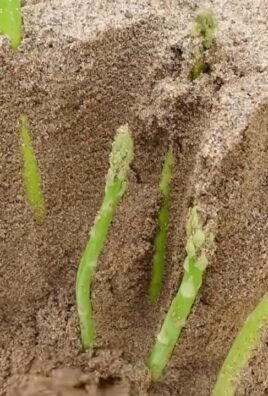
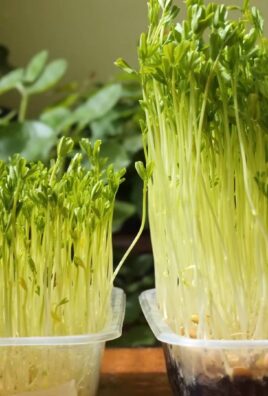
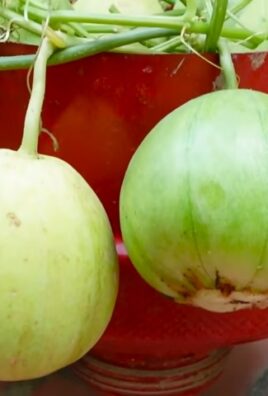
Leave a Comment